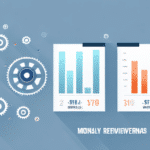Understanding the Cost of Goods Sold
The Cost of Goods Sold (COGS) refers to the direct expenses incurred in the production of goods or services sold by a business. These expenses typically include the cost of materials, labor, and overhead directly associated with the production process. Understanding your COGS is crucial for effective business management, as it helps determine pricing strategies to ensure profitability.
Explaining Cost of Goods Sold in Simple Terms
COGS represents the total cost of producing or acquiring the products that a company sells during a specific period. It encompasses all direct costs, such as raw materials, direct labor, and manufacturing overhead. A higher COGS generally indicates lower profit margins, making it essential to manage these costs effectively.
Components of COGS
- Raw Materials: The basic materials used in the production of goods.
- Direct Labor: Wages paid to employees directly involved in manufacturing.
- Manufacturing Overhead: Indirect costs related to production, such as utilities and equipment maintenance.
Calculating Gross Profit
Gross profit is calculated by subtracting COGS from total revenue:
Gross Profit = Total Revenue - COGS
This metric indicates the financial health of a company's core operations, excluding other expenses.
Importance of Knowing Your COGS
Understanding COGS is vital for several reasons:
- Pricing Strategy: Determines how much to charge for products or services to achieve desired profit margins.
- Cost Management: Identifies areas where costs can be reduced to improve efficiency and profitability.
- Financial Analysis: Assists in evaluating profit margins and making informed business decisions.
Accurate COGS calculation also aids in negotiating better terms with suppliers by providing a clear understanding of production costs.
Factors that Affect Cost of Goods Sold
Several factors can influence COGS, including:
- Raw Material Costs: Fluctuations in the prices of raw materials can directly impact COGS.
- Labor Costs: Changes in wages or workforce efficiency affect overall production costs.
- Overhead Expenses: Costs such as utilities, rent, and equipment maintenance contribute to COGS.
- Market Demand: High demand may lead to increased production costs, while low demand can result in excess inventory costs.
- Regulatory Changes: New regulations can introduce additional compliance costs.
Monitoring these factors helps businesses manage and optimize their COGS effectively.
Different Methods to Calculate COGS
There are several methods to calculate COGS, each with its own advantages:
First-In, First-Out (FIFO)
The FIFO method assumes that the oldest inventory items are sold first. This approach can lead to lower COGS during inflationary periods, resulting in higher gross profits.
Last-In, First-Out (LIFO)
LIFO assumes that the most recently acquired inventory is sold first. This method can result in higher COGS during inflation, potentially lowering taxable income.
Weighted Average Cost
The weighted average method calculates COGS based on the average cost of all inventory available during the period. This approach smooths out price fluctuations.
Choosing the appropriate method depends on the business's specific needs and financial strategy. Consulting with a financial professional is recommended to determine the best method for your situation.
How to Track Your COGS Accurately
Accurate tracking of COGS requires meticulous record-keeping and the use of appropriate accounting tools:
- Detailed Records: Maintain invoices, receipts, and purchase orders for all direct expenses.
- Accounting Software: Utilize software solutions like QuickBooks or Xero to automate and streamline COGS calculations.
- Inventory Management: Implement inventory systems to track stock levels and reduce waste.
Separating direct expenses from indirect overhead costs provides a clearer picture of production efficiency and profitability.
Effects of Inaccurate COGS on Your Business
Inaccurate COGS can lead to significant financial miscalculations:
- Profit Margin Misrepresentation: Underestimated COGS can inflate profit margins, while overestimated COGS can deflate them.
- Inventory Management Issues: Incorrect COGS can lead to overstocking or stockouts, affecting sales and operational efficiency.
- Tax Implications: Misstated COGS can result in inaccurate tax filings and potential legal consequences.
Ensuring accurate COGS calculations is essential for maintaining financial integrity and making informed business decisions.
Using COGS to Determine Profit Margins
Profit margins are a critical measure of a company's financial health. By analyzing COGS, businesses can:
- Set Competitive Prices: Ensure pricing covers COGS and contributes to profit goals.
- Identify Cost-Saving Opportunities: Detect areas where expenses can be reduced without compromising quality.
- Evaluate Product Performance: Determine which products yield higher margins and focus on profitable lines.
Understanding the relationship between COGS and revenue enables strategic planning and sustainable growth.
Tips for Lowering Your COGS
Reducing COGS can enhance profitability. Consider the following strategies:
- Negotiate with Suppliers: Secure better prices or bulk discounts to lower material costs.
- Improve Production Efficiency: Streamline workflows and invest in technology to reduce labor costs.
- Reduce Waste: Implement quality control measures to minimize defective products and excess materials.
- Outsource Non-Core Activities: Delegate certain tasks to specialized providers to save on operational costs.
- Adopt Just-In-Time Inventory: Reduce inventory holding costs by ordering materials as needed.
Industry-Specific Examples of COGS
COGS varies across different industries based on the nature of the business:
Manufacturing
- Cost of raw materials
- Direct labor costs
- Factory overhead
Retail
- Purchase cost of inventory
- Transportation and logistics expenses
- Import fees and tariffs
Service-Based Businesses
- Employee salaries and wages
- Office supplies
- Software and tools used in service delivery
Understanding industry-specific COGS helps businesses benchmark and optimize their cost structures effectively.
Comparing COGS Across Different Businesses
Benchmarking COGS against industry peers provides valuable insights:
- Identify Competitive Position: Determine if your COGS is higher or lower than industry standards.
- Spot Cost Reduction Opportunities: Find areas where your costs are excessive compared to competitors.
- Enhance Strategic Planning: Align your cost management strategies with industry best practices.
However, it's important to consider factors such as business size and operational scale when making comparisons.
How to Use COGS in Financial Planning and Forecasting
COGS plays a pivotal role in financial planning and forecasting:
- Budgeting: Forecast future COGS to create accurate budgets and allocate resources efficiently.
- Revenue Projections: Estimate future revenues by analyzing past sales trends and COGS patterns.
- Profit Forecasting: Predict gross and net profits by projecting COGS against expected revenues.
Integrating COGS into financial models ensures a comprehensive understanding of potential financial outcomes and aids in strategic decision-making.
Common Misconceptions about Cost of Goods Sold
Several misconceptions surround COGS:
- COGS Includes All Business Expenses: In reality, COGS only covers direct production costs, excluding operating expenses like marketing and administrative costs.
- COGS is Static: COGS can fluctuate based on changes in raw material prices, labor costs, and production efficiency.
- Higher COGS Always Means Poor Performance: Sometimes, increased COGS reflect higher quality materials or investment in better production methods.
Clarifying these misconceptions helps businesses accurately assess their financial health and operational efficiency.
The Role of Technology in Managing COGS
Technology advancements have significantly enhanced COGS management:
- Accounting Software: Tools like QuickBooks and Xero automate COGS calculations and financial reporting.
- Inventory Management Systems: Solutions such as TradeGecko help track inventory levels, reduce waste, and optimize stock replenishment.
- Data Analytics: Platforms like Tableau provide insights into cost trends and efficiency improvements.
Leveraging these technologies enables businesses to maintain accurate COGS records, identify cost-saving opportunities, and enhance overall financial performance.
Looking Ahead: Future Trends in Cost of Goods Sold Analysis
The landscape of COGS analysis is evolving with emerging trends:
- Artificial Intelligence and Machine Learning: AI-driven tools can predict cost fluctuations and optimize pricing strategies.
- Real-Time Data Tracking: Enhanced real-time monitoring of production costs allows for timely adjustments and improved accuracy.
- Sustainability Initiatives: Increasing focus on sustainable practices can influence COGS through investment in eco-friendly materials and processes.
- Global Supply Chain Integration: Enhanced integration across global supply chains can lead to more efficient cost management and reduced COGS.
Staying abreast of these trends will enable businesses to refine their COGS strategies, leveraging technology and innovative practices to maintain competitiveness and profitability.






















